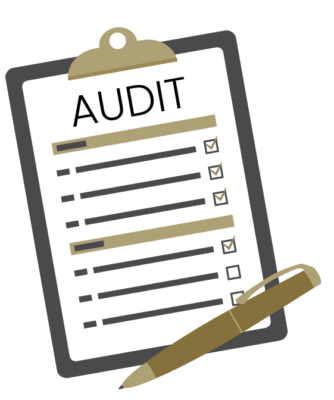
Audits
In general terms, the objective of an audit is to independently check accounting, economic or financial transactions and also to check the internal mechanisms of the company. At the end of each audit, it is clear whether the financial statements present a true and fair view of the financial position in accordance with the Czech or international accounting principles.
Simply put, we use established procedures to verify that what is reported in the financial statements is correct, in accordance with legal requirements, and that any discrepancies are immaterial in the context of the company.
Ondřej Krátký
- Vít’a gained experience as an auditor at EY, where he worked for over 5 years. Subsequently, he worked and gained experience in internal audit.
- vita.cerny@kratkyaudit.cz
- +420 775 237 698
- vitezslav-cerny-4459722a

- Ondřej worked as an auditor at EY, where he gained most of his experience. He is a statutory auditor (license no. 2437) and also managing partner.
- ondrej.kratky@kratkyaudit.cz
- +420 736 412 684
- ondřej-krátký-796a3033

The Accounting Act requires certain entities to have their financial statements audited by a statutory auditor. The objective of the statutory audit is to obtain an opinion from an independent person (statutory auditor) that the financial statements give a true and fair view of the company’s economic situation.
Financial statements serve as an important source of information for suppliers, customers, employees, potential investors, banks and of course for owners who need to rely on them.
Reporting packages are usually prepared by subsidiaries for their parent companies abroad. As auditors, we are able to verify that the reporting package presented complies with IFRS or US GAAP or is prepared in accordance with the Group’s accounting manual.
There are a number of subsidies, either from Czech public finances or from EU structural funds, which require verification by an independent auditor. We regularly encounter them in business entities and non-profit organizations. The main objective of a subsidy audit is to assure the contracting authority that the terms and conditions of the subsidy have been complied with.
For non-profit organisations, an audit is also the process of verifying that the financial statements give a true and fair view of the organisation’s financial position. As in other cases, we communicate the results of the audit in an audit report. Organisations can publish this information to comply with legal requirements and obligations to donors or other stakeholders.
As external auditors, we also perform reviews at the level of municipalities, cities and regions. Our aim is to verify that local authorities are managing the allocated funds in accordance with the public interest and do not exceed the legal framework. If necessary, we also monitor whether they have functional control mechanisms in place to prevent waste of public funds and possible overstepping of the law.
Thanks to the internal audit, the company’s management gets an overview of how well or badly the procedures, operations and control mechanisms are set up in their company. Internal audits are carried out by specialists who monitor compliance with set processes, assess potential risks and point out weak points.
A forensic audit is a special type of audit that is conducted to detect financial fraud or illegal activities in companies or organizations. Its aim is to detect all irregularities and illegal accounting. A forensic audit is often approached when corruption or misuse of funds is suspected.
The due diligence usually comes before the establishment of a certain business relationship. Often this is an acquisition or capital investment.
This type of audit should provide the investor with very detailed information on how the organisation it wants to buy, merge with or invest in is doing. In this context, a financial, legal, operational or personnel analysis is carried out. This allows the investor to decide whether or not to give the business the green light.
Audit scheme
Planning
Every audit starts with planning. First, let’s get to know what is your company doing. We then plan the audit dates together, discuss and set up mutual cooperation, and determine the scope of the audit work.

Preliminary audit
At this stage, a preliminary audit of your company will take place. We will describe and examine the financial flows in the most important processes and identify potential risks. We also assess internal control mechanisms. We are also testing the income statement for the part of the audit period already closed.

Final audit
The final audit is the key audit phase and consists of “testing the numbers” of the financial statements. Basically, we are finding out if the numbers give a true and fair picture of the company. At this stage we perform the so-called substantive tests for each group of significant accounts. In practice, this means that we will perform detailed data analyses, verify invoices, contract documentation and also analyse the development of the company as a whole.

Finalisation
In the final stage, we prepare an audit report that contains the auditor’s opinion. We may also prepare a management letter setting out the auditor’s findings and opinions, discrepancies (if any) and recommendations for improvement.
